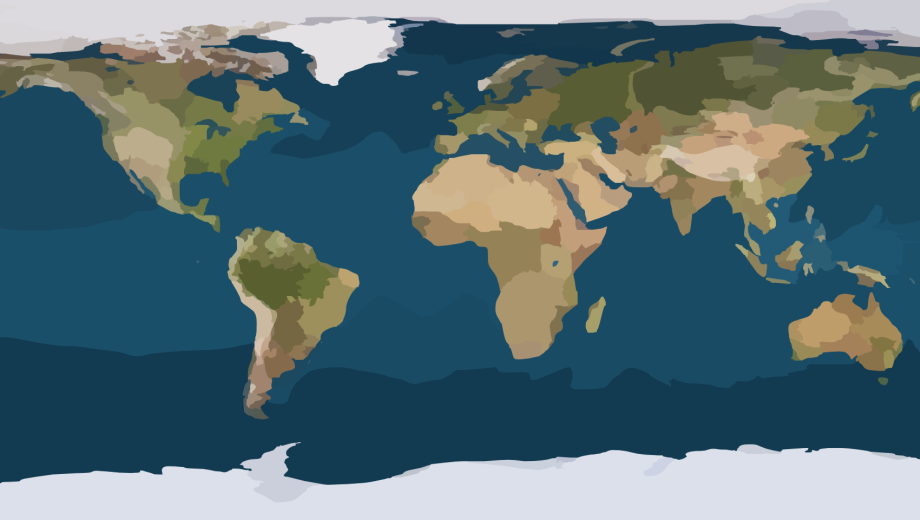
The world of managing international activity and research projects is often shifting, depending on the day’s current events.
Research Security and Compliance staff support University of Missouri System researchers and scholars in this evolving landscape and ensure their world-changing work is secure, compliant and in line with U.S. national security, economic interests and foreign policy objectives.
They also work to ensure compliance with all standards concerning export controls and sanctions, which are the U.S. laws and regulations that govern the distribution of technology, services and information to foreign people.
Recently, the UM System announced new efforts to fully align the export control and sanctions programs across the UM System’s four universities under the leadership of Kate Stoan, director of Research Security and Compliance. The announcement also highlighted certain requirements for all UM system personnel.
Stoan talks about that alignment and the importance of research security and compliance.
How does this new alignment for research security and compliance better serve faculty, staff and students?
This allows us to leverage our expertise while reducing fragmentation. Many of our faculty are collaborating across the system, and this structure ensures we can provide a more consistent approach while also considering the uniqueness and the strengths of each university.
What are some need-to-know requirements of faculty, staff and students when it comes to research security and compliance?
The best thing you can do is ask questions. You don’t need to know everything in this space, but you do need to know where to go for support. Working internationally is a cornerstone of what we do as a university, and it is important to ensure that we are working internationally in such a way that builds confidence in our federal and industry partners.
If you need to engage in activities with someone in a comprehensively sanctioned destination (Cuba, Iran, North Korea, Syria, or the Crimea, Donetsk or Luhansk regions of Ukraine), let us know. We can, and should, be recruiting the best and the brightest people from around the world, but we need to remember that we cannot engage in research or educational activities with people while they are still located in these countries. If you need to, we may be able to make it happen – there are just a few hoops we must jump through, so let us know. Also, if you have any inkling that anything we provide to a foreign party could be used in chemical or biological weapons, nuclear activities or weapons of mass destruction, let us know immediately. An analysis of export controls and sanctions is highly specialized and fact-based. Any change in the fact pattern can impact the outcome of our analysis, and the regulations are changing every day.
What are some hot-button export control issues or new sanctions that researchers should be aware of?
It’s important to remember that sanctions programs are stringent and dynamic. There are comprehensive sanctions in place for Cuba, Iran, North Korea, Syria, and the Crimea, Donetsk and Luhansk regions of Ukraine. When comprehensive sanctions are issued, all activities need to stop, unless the government has explicitly issued a “carve-out” allowing that activity to continue. These carve-outs are different for each sanctions program, so what may be an acceptable activity with Cuba may not be an acceptable activity with Iran. The U.S. tries to implement sanctions programs multilaterally so that multiple countries are acting together for a common purpose.
We continue to see federal concerns over the transfer of technology to foreign people at universities. Generally, most technology we are working with is exempt from export control regulations, and we have procedures in place with our sponsored programs offices to help us identify when we may be working with technology that is controlled by the regulations. We’ll reach out to you if we think you might be crossing into that territory with your research. We must not forget, however, to disclose outside activities and engagements on proposals and grant applications for federal funding.
What’s the best way for researchers to stay up to date on these research security and compliance concerns?
The goal of our program is to work closely with other administrative units, allowing our researchers to focus on their research. If we think something you’re doing might intersect with these regulations, we’ll reach out. You can always check the export controls and sanctions webpage on your university’s website or the UM System website for general information. Additionally, our Research Security and Compliance staff is always happy to present to your lab, at faculty/staff meetings or one-on-one tailoring the discussion to the specific audience. We’re working on a Collected Rules and Regulations and an Export Compliance Management Plan, too. We also will be putting more robust information on our websites.
If faculty, staff or students are looking for guidance or have more questions about research security and compliance, who should they contact?
We’ve recently created a new webpage on the UM System site. This will show you the contact information for the compliance professionals with responsibilities in this space for each of our universities. It also provides links to your university’s specific website along with some general guidance.